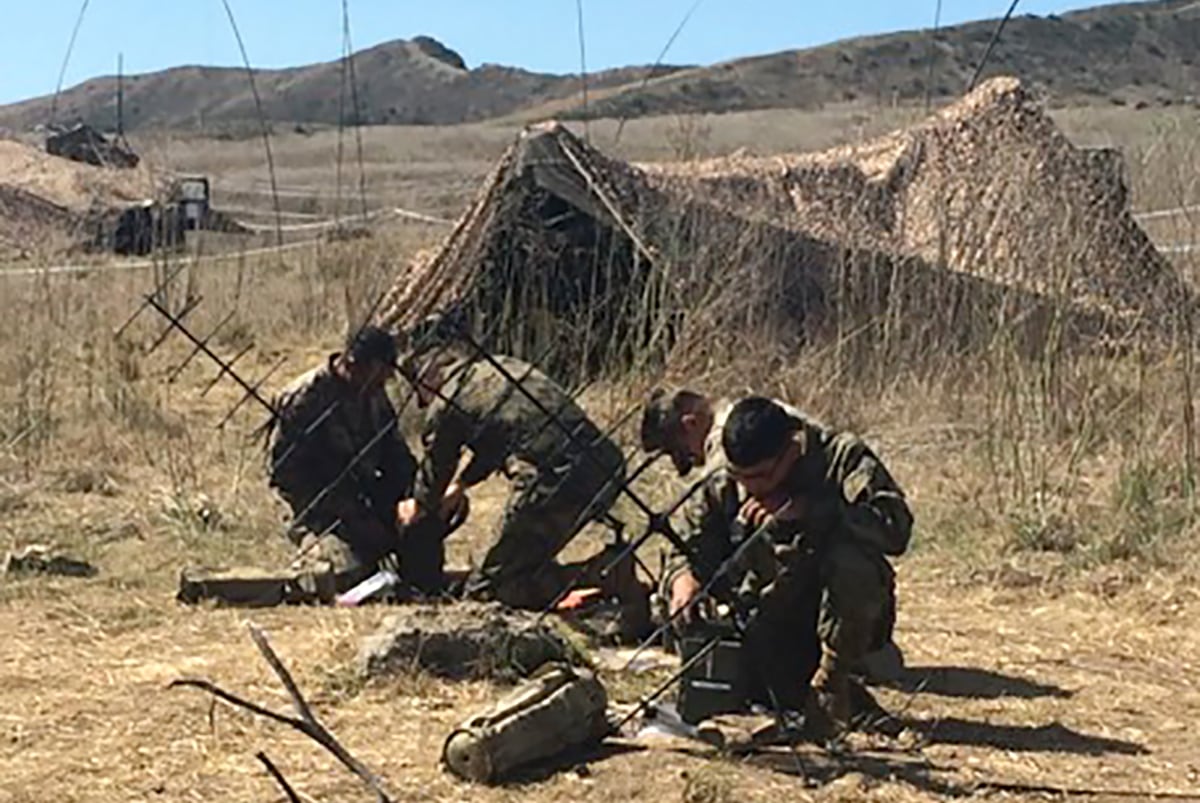A Navy satellite system will help Marines communicate on the move and in previously difficult environments, such as heavy vegetation or urban areas.
The Mobile User Objective System, or MUOS, is a narrowband satellite system that provides smartphone-like capabilities to increase voice and data communications access, according to a Marine Corps Systems Command release.
The system provides more secure and reliable beyond line-of-sight communications, according to the release. Marines should see the first units arriving in the fleet later this year and leaders are targeting operational capability for first quarter 2019.
“The most obvious [advantage] to operating forces will be the increased accessibility,” said Capt. Shawn Avery, MUOS project office in Command Element Systems at Marine Corps System Command. “This will allow us to explore new operating concepts by pushing on-the-move voice and data connectivity to the squad level.”
All five MUOS satellites are on orbit. The new hardware allows the satellites’ signals to focus on a smaller geographic area, which increases connectivity.
“This improvement enables on-the-move access while improving overall reliability in vegetation, urban environments and other extreme conditions where legacy SATCOM was challenged,” Avery said.
Like a cellphone, the new system will be able to roam, seeking out signals as it moves from one location to the next, such as communicating in the continental United States and then immediately deploying to another area.
“This system takes a lot of stress off of the operators, allowing them to walk around on patrol without the range constraints of terrestrial networks, Avery said.
Users will now have access to the Defense Information System Network, or DISN. In the past, Marines had to hold terrain and bring in cable links to provide that access, which increased operational exposure, or lease costly commercial capabilities.
Communicators can now access and move more data more quickly in austere environments than before.
Until now infantry companies had limited SATCOM access but with this technology, officials say that company commanders can put Marines beyond line of sight with fewer worries about losing connectivity.
Versions of MUOS technology have been previously fielded with Marine units over the past six years, according to the release, in the AN/PRC-117G.
A vehicular kit also AN/VRC-114’s to accept MUOS, according to the release.
That system firmware will be updated and three new antenna kits added for different op configurations.
Todd South has written about crime, courts, government and the military for multiple publications since 2004 and was named a 2014 Pulitzer finalist for a co-written project on witness intimidation. Todd is a Marine veteran of the Iraq War.





